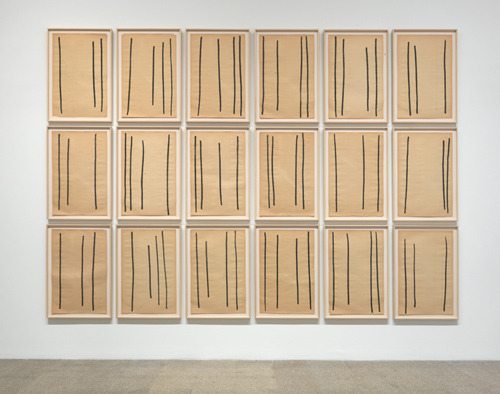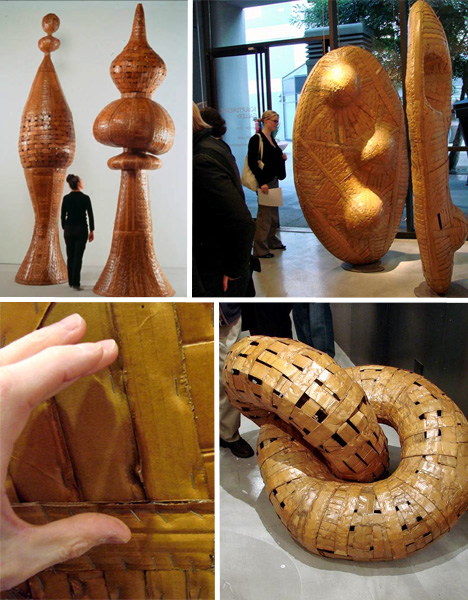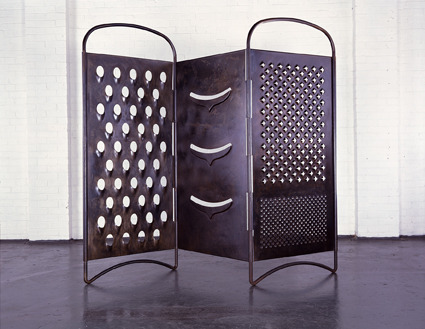While I was visiting the MoMA several weeks ago, I stumbled upon this installation/happening/experience orchestrated by NYC-based Thai artist Rirkrit Tiravanija. The piece, a rendition of an event the artist first organized in 1992, and a recent acquisition of MoMA's collection, is basically, in the simplest of terms, a meal. Following in Gordon Matta-Clark's footsteps (see Food), Tiravanija has orchestrated a space in which viewers quite literally become a part of the work, activating it you might say, by partaking in a bowl of vegetarian curry and rice (quite delicious I must add), experiencing the event alongside other visitors.
This type of social organization is part of the growing discourse surrounding the relatively new (past 20 years) artistic genre known as "relational aesthetics" or in some cases, "social practice."
(another work by Rirkrit Tiravanija featured on the cover of Bourriaud's Relational Aesthetics)
Curator and critic, Nicolas Bourriaud coined the term "relational aesthetics" in 1995 and authored the seminal text of the same title (more here). In it, he defines relational art as "a set of artistic practices which take as their theoretical and practical point of departure the whole of human relations and their social context, rather than an independent and private space." So rather than producing objects (paintings, sculptures, photographs, etc.), artists in this field are more interested in eliciting audience participation, in staging interactions among viewers, and calling these events/interactions the work itself.
YouTube personality Hennesey Youngman does a pretty good job explaining the subject in a rather cynical, yet quietly hilarious manner. Notice he alludes to Rirkrit Tiravanija's "covivial happening in the antiseptic confines of an art gallery." This guy knows his stuff, despite his appearance and less than tasteful vocabulary (please excuse the potty words). See more of his Art Thoughtz here!











